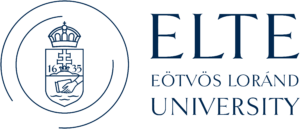
Eotvos Lorand University
Green Education Ranking
#462
About Eotvos Lorand University
Eötvös Loránd University (Hungarian: Eötvös Loránd Tudományegyetem, ELTE, also known as University of Budapest) is a Hungarian public research university based in Budapest. Founded in 1635, ELTE is one of the largest and most prestigiouspublic higher education institutions in Hungary. The 28,000 students at ELTE are organized into nine faculties, and into research institutes located throughout Budapest and on the scenic banks of the Danube. ELTE is affiliated with 5 Nobel laureates, as well as winners of the Wolf Prize, Fulkerson Prize and Abel Prize, the latest of which was Abel Prize winner László Lovász in 2021. The predecessor of Eötvös Loránd University was founded in 1635 by Cardinal Péter Pázmány in Nagyszombat, Kingdom of Hungary (today Trnava, Slovakia) as a Catholic university for teaching theology and philosophy. In 1770, the university was transferred to Buda. It was named Royal University of Pest until 1873, then University of Budapest until 1921, when it was renamed Royal Hungarian Pázmány Péter University after its founder Péter Pázmány. The Faculty of Science started its autonomous life in 1949 when The Faculty of Theology was separated from the university (now Pázmány Péter Catholic University). The university received its current name in 1950, after one of its most well-known physicists, Baron Loránd Eötvös.
About World Green University Ranking
World
Green University Ranking 2024 is a
scholarly acknowledgment of educational
institutions standing at the forefront of
Education for Sustainable Development (ESD) and
leading the Green Education Transformation
(Education 6.0).
World Green University Ranking classifies
universities based on the six pillars of the
Holistic Green Education Framework, including
leadership governance, curriculum, innovation,
facilities, human capital, and community
partnerships.
The methodology employed in our Green Education Ranking is designed relying on the six pillars of the Holistic Green Education Framework. Each pillar contributes to the institution’s overall score, with a carefully assigned weight reflecting its significance in fostering sustainability. The total weight of the six pillars collectively amounts to 100%, signifying a balanced evaluation across critical dimensions of Green Education. Within each pillar, various standards are carefully assessed, with weights ranging between 1 and 2, emphasizing the varying importance of each criterion. This nuanced approach ensures a holistic evaluation and offers an insightful measure of universities commitment to Green Education Transformation (Education 6.0).
| # | Six Pillars of Green Education Framework (6Gs). | Weight |
|---|---|---|
| 1 | Green Educational Leadership | 14% |
| 2 | Green Curriculum | 17% |
| 3 | Green Innovation and Research | 19% |
| 4 | Green Facilities | 15% |
| 5 | Green Human Capital | 19% |
| 6 | Green Communities | 16% |
| Total | 100% |

